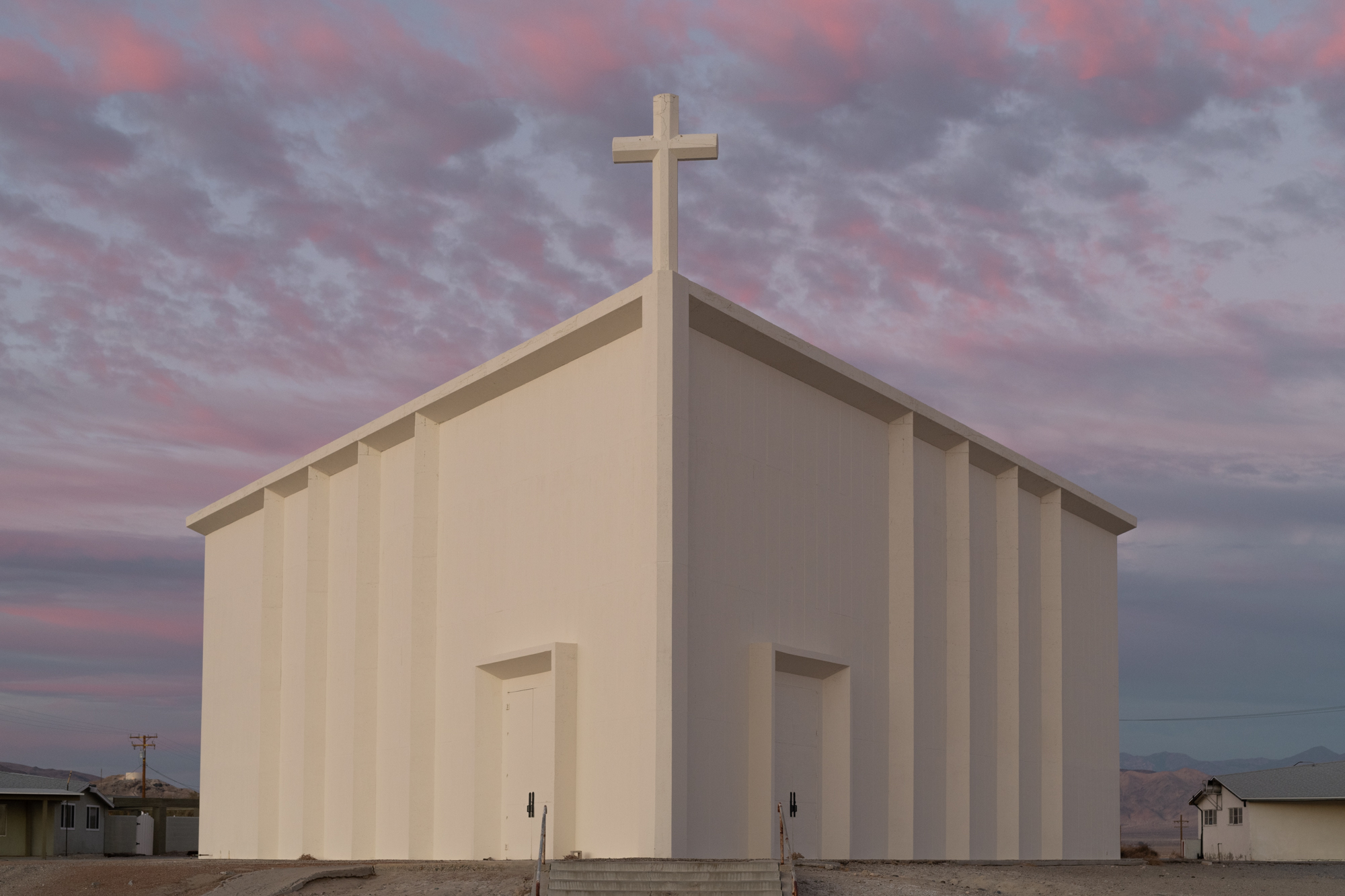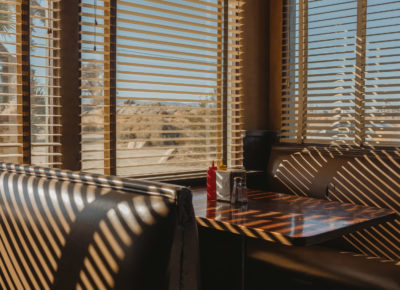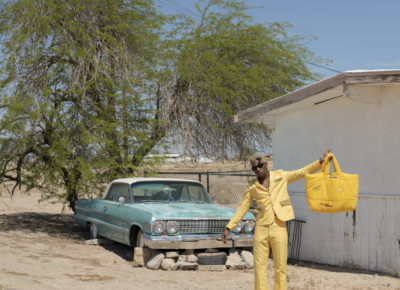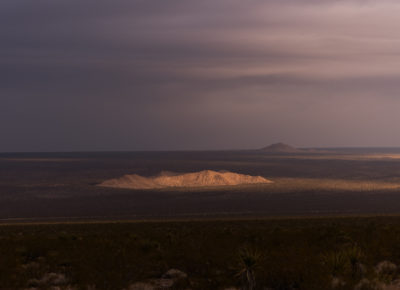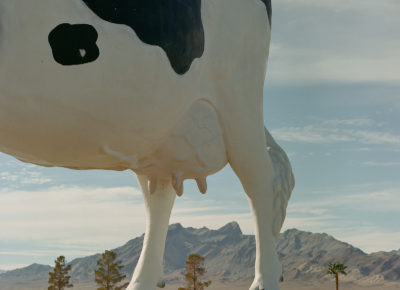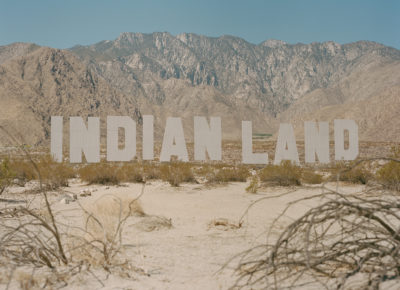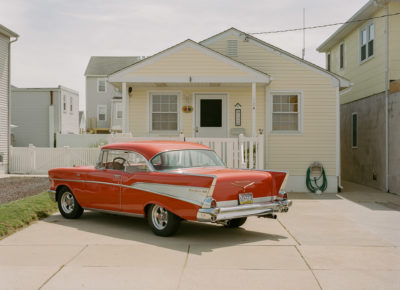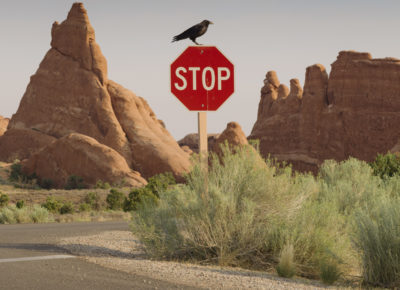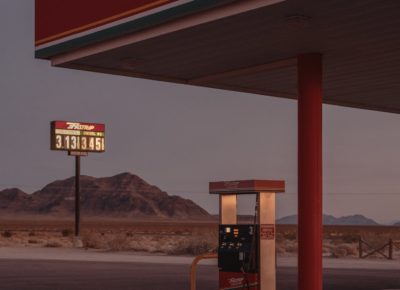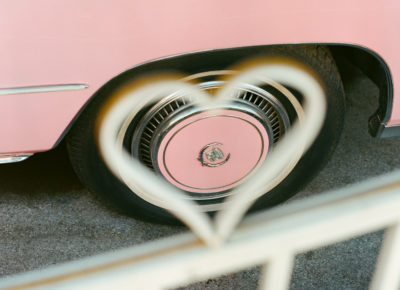How The American West Shaped Dino Kužnik
Arts
Before I became a writer, I desperately wanted to be a photographer. For a few years, at the end of high school and beginning of college, I threw myself headfirst in the discipline. I spent whole paychecks on film, lenses and, eventually, a Mamiya RZ67 that I still use and cherish to this day. Along the way, I read a lot of photography magazines, watched YouTube channels dedicated the photography theory and bought dozens and dozens of photo books; one that stood out from the rest was Dino Kužnik’s 2019 photo book Shaped By The West.
There is something about Kužnik’s work that is both shockingly real yet impossibly manicured, almost like he created miniatures. Shaped By The West spoke deeply to me, not only because of Kužnik’s impeccable style, but also because the book contained scenes of the American West that I grew up surrounded by. I was lucky enough to chat with the artist about Shaped By The West and discuss the inspirations, ideas and contradictions that lay between its pages.
SLUG: Your book Shaped By The West is about identities, focusing on the numerous and mythical identities of the “American West,” which appears in your photos in multiple ways: vast shots of Nevada, Utah and New Mexico’s red rocks and mesas and Southern California’s surf and suburb culture. What about these scenes appealed to you? How do they contrast to your home country of Slovenia?
Kužnik: Growing up in Slovenia in the ’90s, I was exposed to these scenes primarily through movies and other forms of media. These images left a lasting impression on me, which is why I felt such a strong connection to them when I moved to the U.S. and began photographing the American landscape. Slovenia gained its independence in 1991 from the former Yugoslavia, and with that came a flood of Western influences communicated through movies, TV, music, etc. The younger generation, including myself, felt more connected to these Western themes rather than anything traditionally Slovenian. This cultural shift helped shape my fascination with American iconography and landscapes, [as well as] its people which I explore through my work—personal and professional.
SLUG: Much of the man-made subjects of your photos are quite dated (save for a few shots like the Tesla station) and many of the cars in your photos are from the ‘50s and ‘60s that are parked in front of very unique, art deco homes. What is it about these symbols that appealed to you?
Kužnik: I’m drawn to a different era of the U.S., an iconic one where design and culture stood out. Today, with the consolidation of design, for example, every new SUV looks the same, and much of the architecture, particularly in cities like New York, feels a bit safe or, dare I say, boring. There’s a certain nostalgia for the bold, oversized and sometimes even ridiculous aspects of mid-20th-century American design, but at least those things had character and were visually iconic. I think nowadays everything is starting to blend together. That’s what attracts me to these older symbols: They represent an era of individuality and boldness.
SLUG: A common setting in your photos is often rest stops or gas stations in the middle of red rocks and deserts. it reminds me loosely of Edward Ruscha’s 1963 book Twentysix Gasoline Stations, which took him on road trip from Los Angeles to Oklahoma City. The route he took would’ve taken him through the same exact areas you photographed in your book. Was Ruscha’s book an inspiration for you?
Kužnik: Actually, I wasn’t introduced to Ruscha’s work until much later, after my series Shaped By The West had already begun taking shape. Stephen Shore’s work was much more of an influence on me, I would say. Over time, I’ve discovered many other artists who documented similar subjects in the ’60s, ’70s and ’80s. When I started photographing these themes, it wasn’t a popular subject among hobbyist photographers; there were only a few people exploring this on Flickr where I was sharing some of my work back in the day. But with the rise of Instagram and the resurgence of analog photography, this style of photography has exploded. I’d even argue it’s a bit oversaturated these days. While there are plenty of pretty single images floating around, I think fewer people are focusing on developing cohesive bodies of work. I wish more young photographers would take their time with projects [and] let images marinate, rather than constantly chasing the algorithm and the pressure to share everything immediately.
SLUG: What were the moments from your road trip that stood out to you? How was your trip through Utah? What parts of the state did you travel through?
Kužnik: Between 2016 and 2019, I went on a lot of road trips where I created the work that is featured in the book. There were many moments of silence, clarity, freedom and joy during these journeys, but none that particularly stand out now. If I had to pick one, I’d say one of the most memorable moments was watching a stunning sunrise at the Trona Pinnacles—it was one of those experiences where all your problems just seem to melt away. In terms of Utah, I traveled through the southern part of the state, where the landscape is more desolate and the area I explored extensively is around Monument Valley and the town Page, right south of Utah’s border in Arizona. That’s what draws me to those areas—the harshness and solitude of the environment. It wasn’t just Utah, though. I also traveled through California, Arizona, New Mexico, Nevada, Colorado and Oregon (Oregon didn’t make it into the book due to its distinct visual difference, though).
SLUG: Were there contradictions for you—as a Slovenian man, struggling to secure an artist visa during the project—photographing images of the American Dream?
Kužnik: There were certainly contradictions. The U.S. is often portrayed as the best country in the world, but the realities of living here, like securing a visa, can be extremely challenging. The process required a lot of work and a lot of finances. I was fortunate enough to be employed as a graphic designer in the tech industry at the time, which allowed my photography to be more of a side hustle. However, by 2019, photography became my primary business. So, while the idea of the “American Dream” is very appealing, the actual journey to live and work here as a foreign artist is not an easy one.
SLUG: What do you feel this photo project communicates to audiences about the reality of the “American Dream”?
Kužnik: The series subtly deconstructs the idealized imagery of the American Dream. For instance, the first photo in the series titled “Stop” features Monument Valley, a classic symbol of the American West, juxtaposed with a large red stop sign, grounding that romanticized notion. It’s as if to say, “You can’t proceed.” Throughout the series, I showcase the visa application process as a metaphor for the obstacles I faced when trying to live the American Dream. I do, however, end the series on a positive note with an image of open doors leading into the Monument Valley … symbolizing a full circle and my eventual visa approval. While the series is a personal journey, I believe it’s relatable for anyone who has gone through a similar experience.
SLUG: A common theme I’ve noticed throughout all your work is pairing old or rundown settings with almost pristine subjects. I’m thinking of the photoshoot you did with Kyle Kuzma for Puma which is right under the awning of an abandoned gas station with a polished pair of shoes and what looks to be a brand new hoop hung on the back wall. Are these contrasting elements something you’re drawn to?
Kužnik: Absolutely. I’m very drawn to positioning my subjects in these kinds of environments. It become something I’m known for. Artists and brands often approach me specifically for this aesthetic. Tyler the Creator, for example, reached out to me for this exact aesthetic—he said “I want to be in your images presented as a sharp-edge prop,” as have other brands like Tesla, Puma, Woolrich and even individuals like Jay Versace and Junebug. It’s an aesthetic that resonates with me and other people, and it does allows me to create dynamic visual narrative and images with a distinct style [that] many people are attracted to.
SLUG: If you had an unlimited budget and time, what other settings (both physical and symbolic) would you love to photograph?
Kužnik: I’d love to document communities and individuals who have been left behind by the American Dream. It would be an exploration of the more negative side of aggressive capitalism that is so prevalent in this country. I’d also love to explore and photograph other states like Montana, Wyoming and Texas, where I think there are still stories left to tell.
SLUG: Anything else you’d like our readers to know?
Kužnik: Thank you for your interest in my journey and work. I believe that if you follow your heart in what you do, the dream will naturally follow.
Kužnik’s Shaped By The West is no longer in print, but you can pick up some of his prints from his website, dinokuznik.com. You can continue to see his photos in multiple ads, collaborations and features like The New Yorker, Urth and Sony Music, along with many others. Within the last year, Kužnik, along with his business partner Arnaud Montagard, opened Aliens In Residence, a photography publishing house that has featured the likes of Ian Howorth, Leah Frances and, most recently, Ben Zank. You can keep up with Kužnik’s personal and business life through his Instagram @dinokuznik.
Read more artist interviews here:
How Annie Elise Gave Victims A Voice
The White Buffalo Called Her To Clay: Pahponee’s Ceramics and Bronze Art
